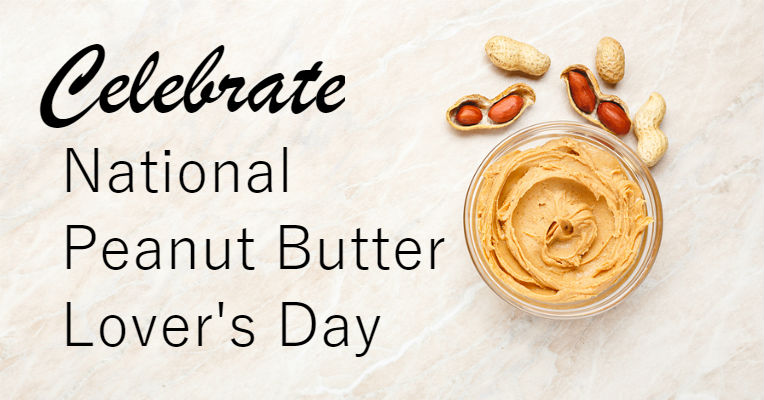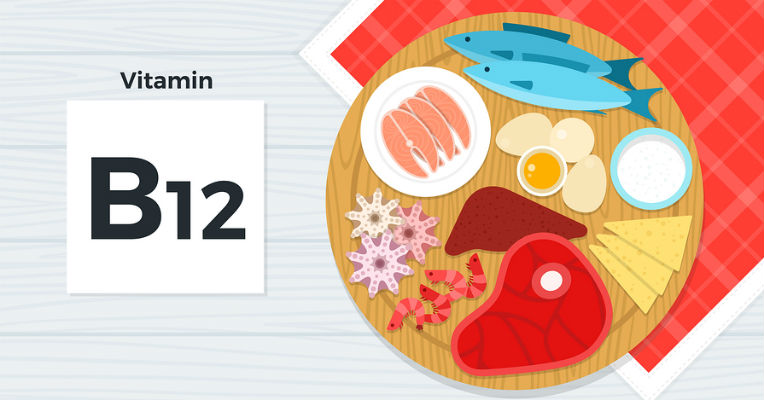If Valentine’s Day conjures up images of heart-shaped candy boxes, cupid cupcakes and other sweet treats, you are not alone. We grew up with the commercialism and the traditions of this holiday just like all the others. One of the challenges after bariatric surgery is to redefine the holidays—to shift the emphasis from food. It is freeing to lose the images of sugary treats and replace them with new images. Rather than a sense of deprivation, this transition can bring with it a deeper, more satisfying experience for you and your family. Just think of yourself as the vehicle for change—the one to impart a healthier lifestyle to future generations. Learn new traditions, give simple gifts, and increase your use of loving words and actions. Maybe your kids will automatically carry on the tradition of a Valentine’s tree (see below) with their own families rather than lavishing their children and spouses with chocolate.

Traditions
Find new ways to celebrate Valentine’s Day or challenge yourself for the entire month of February to focus on expressing love to the people who mean the most to you. Blow off the sweets and start some new traditions that build relationships and truly express your love. After you’ve redefined Valentine’s Day, you might be ready for family birthdays—how could you celebrate without the traditional cake and ice cream? I bet you can come up with some more meaningful ways to celebrate those special days.
Cut out red, pink and white hearts. Give every family member enough hearts to write one thing that they appreciate about each family member. (They can fill out a heart for themselves too.) Post the hearts with loving sayings on each family member’s bedroom door. You can do this for just one day, a week or each day for the entire month. Think about the environment of love this exercise can create!
Cut down a tree branch and place it in foam inserted in the bottom of a planting pot. You may want to paint the branch red/pink/white or just leave natural. Cut red/pink/white hearts out of construction paper and punch a small hole at the top. Have family members think of words that mean love to them. Write these on the hearts. You may want to have children decorate the one side of the hearts with glitter, ribbon, doilies or paint. Hang the hearts from the tree with yarn.
Purchase small gifts and place them in red bags with white tissue paper. Attach a heart shaped name tag on each one.
Let the love extend beyond your family by reaching out to others. It may be as simple as making a Valentine’s Day card for an elderly neighbor and delivering it as a family. You may consider sponsoring a child through one of the great established organizations (about a dollar a day). You have the idea…it isn’t hard to find someone who has a need.
Gifts
Keep gift giving simple and meaningful this year.
Write love notes and leave them in places where they will be found throughout the day (in the car, on the bathroom mirror, on the bed pillow, in the backpack, in the purse, in the lunch bag, near the toothbrush). How about a note like, “You drive me crazy!” placed on the steering wheel?
Write down and present your Valentines with 100 reasons why you love them.
Put together a CD or playlist of their favorite songs or romantic songs.
Get a babysitter every Friday.
Create a jar or basket filled with love coupons for hugs, kisses, back rubs or foot rubs to be redeemed over time.
Words
Make an extra effort to show family members that you love them through the words you choose to use:
You mean the world to me. I like the way you handled that. Wow, you really thought out the solution to that problem. I have faith in your ability. I appreciate what you did. You are really showing improvement. I trust you. It must make you proud of yourself when you accomplish something like that. You’re special. Well done. You’re on top of it. Hurray for you! You are a valuable part of our family. I’m proud of you for trying. It is such a blessing to be your mom (or wife, grandma, dad). You did so well at that! How smart. I admire you for ….. (a specific quality or trait). If more people were like you, the world would be a better place. It’s one of my favorite things to be with you. You’re an amazing person. I believe in YOU. You’re precious. You’re a real trooper. Thanks for what you did to help me. You did a great job. You make me happy. What an imagination. You mean so much to me. I love your sense of humor. You’re so much fun to be with. Thank you. I’m sorry. Tell me more. You can do it. How can I help? Let’s work together. How about a hug? Please. Wow! Look at that! You did it. Super. Super-duper. Now, that’s impressive. Bravo! Excellent. Nice work. Good for you. Look what you can do! Wonderful! Fabulous.
Actions
Below are some great ways to say I love you to all of the important people in your life—that includes you.
Use only positive words when talking about your family members, in their presence or when they are not there. Listen with your full attention. Be their biggest fan and encourager. Regularly give a toast of appreciation at breakfast or dinner. Tell them how they bring love to your life. Ask open ended questions and talk about your day during mealtimes. Read books aloud together. Say you’re sorry. Recall good and bad memories. Just hang out together. Encourage mental, physical and spiritual health. Act silly together. Refrain from the temptation to compare your loved ones to others. Ask questions about opinions, feelings and thoughts. Encourage adventures. Always give a big welcome hug when they come home. Show gratitude for them. Compliment them in front of others. Spend time together. Ask for hugs and kisses.Take vacations together. Be honest. Practice self-acceptance. Show interest in their interests. Accept them just the way they are. Forgive. Give the benefit of the doubt. Learn something new together. Keep your promises. Laugh together. Read a story together. End the day with loving words. Have a family hug. Eat meals together. Compliment often. Take walks together. Do a puzzle together. Send an encouraging/loving card in the mail. Make your home a fun place for everyone.
Loving Self-Talk
Love yourself by only allowing positive, loving thoughts to circulate through your mind. Make an individual list of positive affirmations. Here are some ideas to get you started. Then when you notice a negative thought creep in, say “stop” and replace that thought with one of your affirmations.
I am competent. I am energetic. I can grow. I will make healthy choices. I am strong. I can heal. I will reach my goals. I am beautiful. I am enthusiastic. I can make it through this situation. I am loving. I am smart. I can use new ways to cope. I am generous. I can take risks. I can change. I am creative. I am talented. I can let go of fear. I am a good person. I am a good mother/father/sister/friend. I will accept myself as I am. I can be honest with my feelings. I will take care of me today. I love me. I am growing stronger each day. I am caring. I am courageous. I can succeed. I can laugh and have fun. I can exercise. I am becoming healthier each day. I am terrific. I can solve these problems. I will get the support that I need. I will take time to exercise today. I will let others take responsibility for their own lives today.
Strawberry Chocolates
2 oz unsweetened chocolate bar
6 Tbsp. cocoa butter
½ cup powdered erythritol (Swerve or other brand)
11/2 tsp. vanilla extract
1 8-oz. pkg. cream cheese, reduced-fat, softened
1 cup strawberries, sliced
1 pkg strawberry gelatin, sugar-free
24 mini muffin liners
Line mini muffin tins with paper or foil liners and set aside. Make chocolate by heating chocolate bar and cocoa butter in a heavy saucepan over low heat, stirring frequently. When melted, slowly stir in powdered erythritol. Remove from heat and add ½ teaspoon of vanilla extract. Spoon ½ of the melted chocolate into the mini muffin tin. Place in freezer for 5 minutes.
Mix together cream cheese, strawberries, gelatin and 1 tsp of vanilla extract. Beat until smooth. Place in a food storage bag and cut a small hole in one corner for piping. Pipe out evenly on top of solidified chocolate. Press down with a spoon to even out.
Spoon the remaining chocolate over the strawberry filling and freeze for 5 minutes. Remove from the freezer and enjoy. Store in a covered container in the refrigerator. Makes 24 servings.
Nutrition information per serving: 52 calories, 1 gram protein, 5 grams fat, 2 grams carbohydrate, 43 mg sodium.
Chocolate Muffins
¼ cup unsweetened cocoa
¾ cup erythritol (or other sweetener)
1 ½ cups flour
½ tsp baking soda
1 ½ tsp baking powder
1 tsp vanilla extract
1 cup Oikos Triple Zero Yogurt, vanilla
1 egg
½ cup vegetable oil
Preheat oven to 450 degrees F and spray 12-count muffin pan with non-stick spray or add muffin liners. In a medium bowl, mix together cocoa, sweetener, flour, baking soda, and baking powder and set aside. In a large mixing bowl, combine yogurt, vanilla extract, egg and vegetable oil—slowly stir in dry ingredients. Fill muffin cups 2/3rds full. Bake 18-20 minutes or until a toothpick inserted in the center comes out clean. Makes 12 servings.
Nutrition information per serving: 162 calories, 4 grams protein, 11 grams fat, 15 grams carbohydrate, 128 mg sodium.
Chocolate Peanut Butter Cheesecake Cups
24 mini sized foil baking cups
Crust ingredients
10 full sheets graham crackers
1/3 cup stevia, erythritol, or Splenda
6 tablespoons butter, melted
PB filling ingredients
1/2 cup stevia, erythritol, or Splenda
3 tablespoons PB 2 or powdered peanut butter
3 tablespoons reduced-fat cream cheese
Chocolate Filling
4 oz unsweetened chocolate
8 oz reduced-fat cream cheese
1 3/4 cup stevia, erythritol, or Splenda
1/2 cup skim milk
1/2 cup egg substitute
1 teaspoon vanilla
Preheat oven to 350 degrees F. Using a blender or food processor, crush graham crackers into fine crumbs, then mix well with 1/4 cup sweetener and melted butter. Set aside. Place peanut butter filling ingredients in a bowl and mix until well blended. Set aside.
Melt chocolate in small sauce pan over low heat and set aside. Blend cream cheese and sweetener in a small mixing bowl. Slowly add milk and mix until smooth. Add melted chocolate and stir well. Add egg substitute and vanilla and mix until blended. Set aside.
Place 24 mini sized foil baking cups on a sheet pan. Divide the crust mixture evenly between the cups and firmly press into the bottom. Top with ½ teaspoon of the peanut butter filling. Spoon chocolate mixture on top and tap sheet pan on counter top to remove air bubbles. Bake at 350 degrees for 10-15 minutes until slightly firm to the touch. Chill for 2 hours. Serve and enjoy. Makes 24 servings.
Nutritional information per serving: 74 calories, 2 grams protein, 5 grams fat, 6 grams carbohydrate, and 75 mg sodium.
Mini Cherry Chocolate Chip Cheesecakes
From murraysugarfree.com
12 Murray Sugar Free Cookies Murray® Sugar Free Chocolate Chip
12 ounces fat-free cream cheese, softened*
1 cup small-curd, fat-free cottage cheese
1/2 cup refrigerated or frozen egg substitute, thawed
1/2 cup Splenda granular (sugar substitute)
2 tablespoons all-purpose flour
1 teaspoon grated lemon peel
1/2 teaspoon vanilla
3/4 cup light cherry pie filling
Line twelve muffin cups with foil bake cups. Lightly spray with nonstick cooking spray. Place one cookie in each.
In food processor bowl combine cream cheese, cottage cheese, egg substitute, sugar substitute, flour, lemon peel and vanilla. Cover and process until smooth. Spoon onto crusts. Bake at 300°F about 18 minutes or until almost set. Cool on wire rack for 30 minutes. Peel away foil cups.
Refrigerate at least 2 hours. Spoon pie filling onto cheesecakes. Makes 12 servings.
Nutrition Information per serving: 110 calories, 8 grams protein, 3.5 grams fat, 13 grams carbohydrate, 290 mg sodium.




